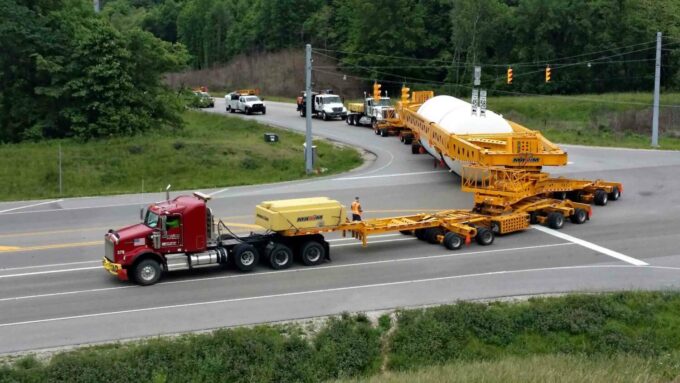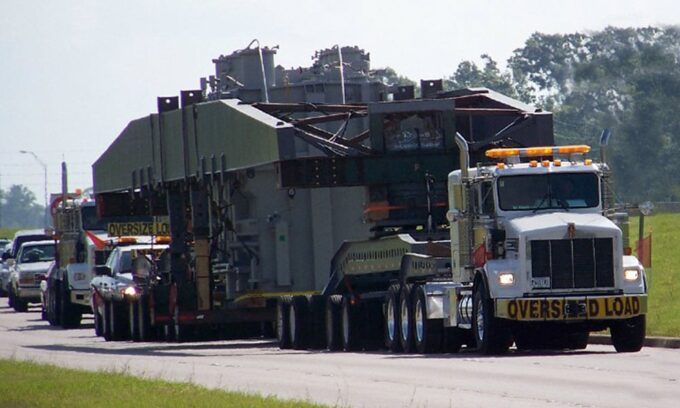Moving heavy machinery is a complex and challenging task that requires meticulous planning, a deep understanding of safety protocols, and practical know-how.
This article provides comprehensive insights into the best practices for safely moving heavy machinery, ensuring both the safety of the personnel involved and the integrity of the equipment.
Understanding the Weight and Dimensions
The first step in moving heavy machinery is to thoroughly understand its weight and dimensions. This knowledge is crucial for selecting the appropriate transportation and handling equipment.
Oversized or overweight ones require special transportation permits and might necessitate route planning to avoid low bridges or weak road structures. Moreover, understanding the machinery’s dimensions aids in navigating through tight spaces and avoiding obstacles.
Selecting the Right Transportation Equipment

Source: civilseek.com
Choosing the appropriate transportation equipment is vital for the safe and efficient movement of heavy machinery. This selection depends on the size, weight, and distance of the move.
For instance, flatbed trucks are commonly used for large equipment, while specialized trailers like lowboys, which have lower deck heights, are ideal for extremely heavy or tall equipment.
It’s essential to ensure that the transportation equipment can safely bear the weight and is suitable for the machinery’s dimensions. Consulting with experts like AIS Eurelo can provide additional insights into the best transportation solutions tailored to specific machinery requirements, further enhancing safety and efficiency in the moving process.
Preparing the Machinery for Transport
Properly preparing the transport machinery is a critical step. This includes securing all loose parts, ensuring that the machinery is clean, and protecting sensitive components. For some machinery, it may be necessary to disassemble parts to make transportation safer or more efficient. Additionally, it’s important to drain any fluids that could leak and cause safety hazards or environmental issues.
Safety Protocols and Compliance

Adhering to safety protocols and regulatory compliance is non-negotiable when moving heavy loads. This encompasses everything from ensuring that it is correctly loaded and secured on the transportation vehicle to obeying road safety and transportation regulations. Workers involved in the move should be trained in safety procedures and use appropriate personal protective equipment (PPE), such as helmets, gloves, and visibility vests.
Loading and Unloading Techniques
Loading and unloading heavy machinery requires precision and care. Using the right lifting equipment, like cranes or forklifts, is essential. The machinery should be balanced and secured to prevent shifting during transport. When unloading, it’s important to do so on a level, stable surface and to follow a predefined process to prevent accidents or damage done to the load.
Route Planning and Site Preparation
Route planning is crucial, especially for oversized loads. This involves selecting a route that accommodates the load’s dimensions and weight, considering factors like road width, bridge clearances, and weight limits. Prior to the move, conducting a site assessment at both the pickup and delivery locations is vital to identify potential challenges such as narrow entrances, overhead obstructions, or uneven surfaces.
Insurance and Liability Considerations

Source: halkin.com
Transporting heavy machinery involves significant risk, making insurance and liability considerations paramount. Adequate insurance coverage should be in place to protect against potential damages or accidents during the move.
It’s also important to understand the liabilities involved and ensure that all contractual obligations with transportation and rigging companies are clear.
Communication and Coordination
Effective communication and coordination among all parties involved in the move are essential for its success.
This includes the machinery owner, transportation team, and any other stakeholders. Regular updates, clear communication channels, and contingency plans for unexpected situations can greatly enhance the safety and efficiency of the move.
Maintenance and Inspection Prior to Movement
Before moving heavy machinery, conducting a thorough maintenance check and inspection is crucial. This includes examining the machinery for any mechanical issues that could pose a risk during transport.
Essential components such as brakes, steering, hydraulic systems, and tires should be in top working condition. Identifying and addressing any repair needs prior to movement can prevent breakdowns or accidents during transportation.
Training and Qualifications of Personnel

Source: whatfix.com
The personnel involved in moving heavy machinery should have the necessary training and qualifications. This includes not only the operators but also those handling the transportation and rigging equipment.
They should be well-versed in the operation, the transport equipment being used, and safety procedures. Ongoing training and certification ensure that all personnel are up to date with the latest safety standards and techniques.
Emergency Preparedness and Response
Preparing for emergencies is a critical aspect of moving heavy machinery. This involves having a well-defined emergency response plan that addresses potential scenarios like equipment failure, accidents, or environmental hazards.
The plan should include emergency contact numbers, first aid procedures, and evacuation routes. Regular drills and training in emergency response can greatly enhance preparedness and the ability to handle unforeseen situations effectively.
Environmental Considerations

Source: bennettig.com
Moving heavy machinery can have environmental impacts, such as emissions from transportation vehicles and the potential for fluid leaks from the machinery. Taking steps to minimize these impacts is important.
This can include using transportation vehicles that meet emission standards, ensuring machinery is leak-free, and planning routes that minimize environmental disturbance. Compliance with environmental regulations is not only a legal requirement but also a responsibility towards sustainable practices.
Post-Move Inspection and Setup
After it has been transported to its new location, a thorough post-move inspection is necessary. This ensures that the machinery has not sustained any damage during transit.
Once the inspection is completed, setting up the machinery involves ensuring it is level, properly aligned, and securely anchored. A final functional test before putting the machinery back into operation can confirm that it is ready to be used safely.
Conclusion
Successfully moving heavy machinery safely and efficiently requires a comprehensive approach that covers every aspect of the process. From initial planning and preparation to post-move setup, each step should be executed with utmost care and attention to detail.
Ensuring the load is in good condition, that personnel are properly trained, and that safety and environmental protocols are followed, minimizes risks and enhances the efficiency of the move.
With proper planning, coordination, and execution, moving heavy machinery can be a smooth and safe process, ensuring the longevity and optimal performance of the equipment.







